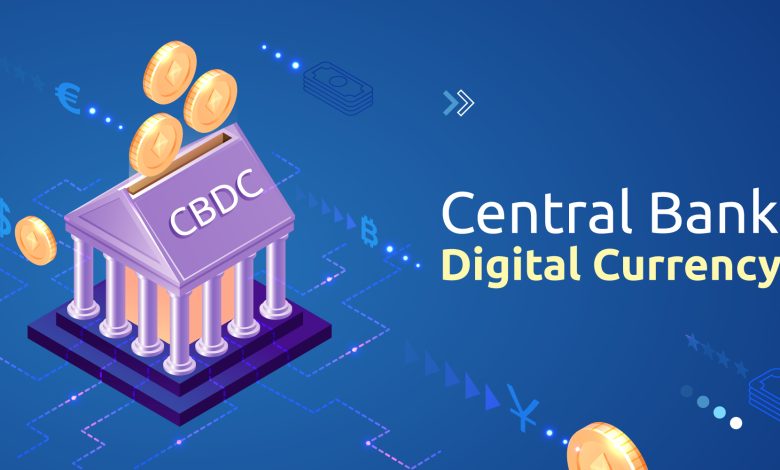The Future of Central Bank Digital Currencies (CBDCs)

- Understanding Central Bank Digital Currencies (CBDCs)
- The Rise of CBDCs: A Game Changer in the Financial World
- Challenges and Opportunities in Implementing CBDCs
- Exploring the Potential Impact of CBDCs on the Economy
- Regulatory Considerations for Central Bank Digital Currencies
- The Road Ahead: What to Expect from CBDCs in the Future
Understanding Central Bank Digital Currencies (CBDCs)
Central Bank Digital Currencies (CBDCs) are a form of digital currency issued by a country’s central bank. Unlike cryptocurrencies such as Bitcoin, CBDCs are centralized and regulated by the government. They are designed to function as a digital version of a country’s fiat currency, allowing for faster and more efficient transactions.
One of the main reasons central banks are exploring the idea of CBDCs is to modernize the current financial system. By digitizing the currency, central banks can streamline payment processes, reduce costs, and increase financial inclusion. CBDCs also have the potential to make cross-border transactions easier and more secure.
Another benefit of CBDCs is the ability to track transactions more effectively. Because CBDCs are digital, central banks can monitor how the currency is being used in real-time. This can help prevent illegal activities such as money laundering and tax evasion.
However, there are also concerns surrounding CBDCs. Some worry about the potential for increased government surveillance and invasion of privacy. Others are concerned about the impact on commercial banks, as CBDCs could potentially reduce the need for traditional bank accounts.
Overall, the future of CBDCs is still uncertain. While many central banks are exploring the idea, there are still many challenges to overcome before CBDCs become mainstream. It will be interesting to see how this technology develops in the coming years and what impact it will have on the global financial system.
The Rise of CBDCs: A Game Changer in the Financial World
Central Bank Digital Currencies (CBDCs) are gaining momentum in the financial world as a potential game changer. These digital currencies, issued by central banks, have the potential to revolutionize the way we think about money and transactions. The rise of CBDCs represents a shift towards a more digital and efficient financial system that could have far-reaching implications for individuals, businesses, and governments alike.
One of the key advantages of CBDCs is their ability to provide a secure and efficient means of payment. By leveraging blockchain technology, CBDCs can offer faster and more cost-effective transactions compared to traditional payment methods. This could help streamline cross-border payments, reduce transaction costs, and improve financial inclusion for underserved populations.
Furthermore, CBDCs have the potential to enhance monetary policy effectiveness for central banks. By issuing digital currencies, central banks can have greater control over the money supply, interest rates, and overall economic stability. This could lead to more targeted and efficient monetary policy tools that can better address economic challenges and promote sustainable growth.
In addition, CBDCs could also help combat illicit activities such as money laundering and terrorism financing. The transparent and traceable nature of blockchain technology can help central banks monitor transactions more effectively and prevent financial crimes. This could lead to a more secure and trustworthy financial system that benefits both individuals and businesses.
Overall, the rise of CBDCs represents a significant shift in the financial landscape. As central banks around the world explore the potential of digital currencies, it is clear that CBDCs have the potential to reshape the way we think about money, payments, and financial stability. It will be interesting to see how this technology evolves in the coming years and the impact it will have on the global economy.
Challenges and Opportunities in Implementing CBDCs
Implementing Central Bank Digital Currencies (CBDCs) presents a unique set of challenges and opportunities for central banks around the world. One of the main challenges is ensuring the security and privacy of transactions conducted using CBDCs. Central banks must implement robust cybersecurity measures to protect against hacking and fraud. Additionally, there are concerns about the potential impact of CBDCs on the traditional banking system and the broader financial ecosystem.
On the other hand, the implementation of CBDCs also presents exciting opportunities for central banks to modernize their payment systems and improve financial inclusion. CBDCs have the potential to make cross-border transactions faster and more efficient, reducing the need for intermediaries. They could also help central banks gather more data on economic activity, enabling them to make more informed monetary policy decisions.
However, central banks must carefully consider the implications of issuing CBDCs, including the potential impact on monetary policy and financial stability. They must also navigate regulatory and legal challenges, as the use of CBDCs raises questions about consumer protection and anti-money laundering measures. Overall, the implementation of CBDCs requires a delicate balance between innovation and risk management.
Exploring the Potential Impact of CBDCs on the Economy
Central Bank Digital Currencies (CBDCs) have the potential to revolutionize the economy in various ways. By introducing a digital form of fiat currency issued by the central bank, CBDCs can streamline financial transactions, reduce costs, and increase financial inclusion. This innovation could lead to a more efficient payment system, making transactions faster and more secure.
One of the key advantages of CBDCs is their ability to provide greater financial access to underserved populations. By allowing individuals to access digital currency through their smartphones or other devices, CBDCs can help bridge the gap between the banked and unbanked populations. This increased financial inclusion can stimulate economic growth and reduce income inequality.
Furthermore, CBDCs can enhance the effectiveness of monetary policy by providing central banks with more direct control over the money supply. This increased control can help stabilize the economy during times of crisis and promote sustainable economic growth. Additionally, CBDCs can help combat illicit activities such as money laundering and tax evasion by providing a transparent and traceable digital payment system.
Regulatory Considerations for Central Bank Digital Currencies
When considering the implementation of Central Bank Digital Currencies (CBDCs), regulatory aspects play a crucial role in shaping the future landscape of digital currencies. Various regulatory considerations need to be taken into account to ensure the successful adoption and operation of CBDCs. Some key regulatory considerations include:
- Legal Framework: Establishing a clear legal framework is essential to define the rights and obligations associated with CBDCs. This framework should address issues such as consumer protection, anti-money laundering (AML) regulations, and data privacy.
- Monetary Policy: Central banks need to consider how the introduction of CBDCs will impact monetary policy transmission mechanisms. They must ensure that CBDCs do not disrupt the stability of the financial system or the effectiveness of monetary policy.
- Financial Stability: Regulators need to assess the potential risks that CBDCs may pose to financial stability. Measures should be put in place to mitigate these risks and safeguard the integrity of the financial system.
- Interoperability: Ensuring interoperability between different payment systems and currencies is crucial for the seamless functioning of CBDCs. Regulators need to promote standards that facilitate cross-border transactions and interoperability between CBDCs and other digital assets.
- Cybersecurity: Protecting CBDCs against cyber threats is paramount to maintain trust in the digital currency ecosystem. Regulators should implement robust cybersecurity measures to safeguard CBDC transactions and infrastructure.
Overall, regulatory considerations for CBDCs are essential to address legal, monetary, financial, interoperability, and cybersecurity aspects. By carefully navigating these regulatory challenges, central banks can pave the way for the successful implementation of CBDCs in the future.
The Road Ahead: What to Expect from CBDCs in the Future
The future of central bank digital currencies (CBDCs) is filled with exciting possibilities. As more countries explore the idea of issuing their own digital currencies, we can expect to see a significant shift in the way we think about money and transactions.
One of the key things to expect from CBDCs in the future is increased efficiency in financial transactions. With digital currencies, transactions can be completed in a matter of seconds, compared to traditional banking systems that can take days to process. This speed and efficiency will revolutionize the way we conduct business and make payments.
Another aspect to look forward to is the increased financial inclusion that CBDCs can bring. By providing a digital currency that is accessible to everyone, regardless of their location or financial status, central banks can help bring more people into the formal financial system. This can have a positive impact on economic growth and stability.
Additionally, CBDCs have the potential to reduce the cost of transactions, especially for cross-border payments. Traditional banking systems often charge high fees for international transfers, but with digital currencies, these costs can be significantly reduced. This can benefit businesses and individuals alike, making it easier and more affordable to send money across borders.
Overall, the road ahead for CBDCs looks promising. With increased efficiency, financial inclusion, and reduced transaction costs, central bank digital currencies have the potential to transform the way we think about money and banking. As more countries continue to explore the possibilities of CBDCs, we can expect to see even more innovations and advancements in the future.



